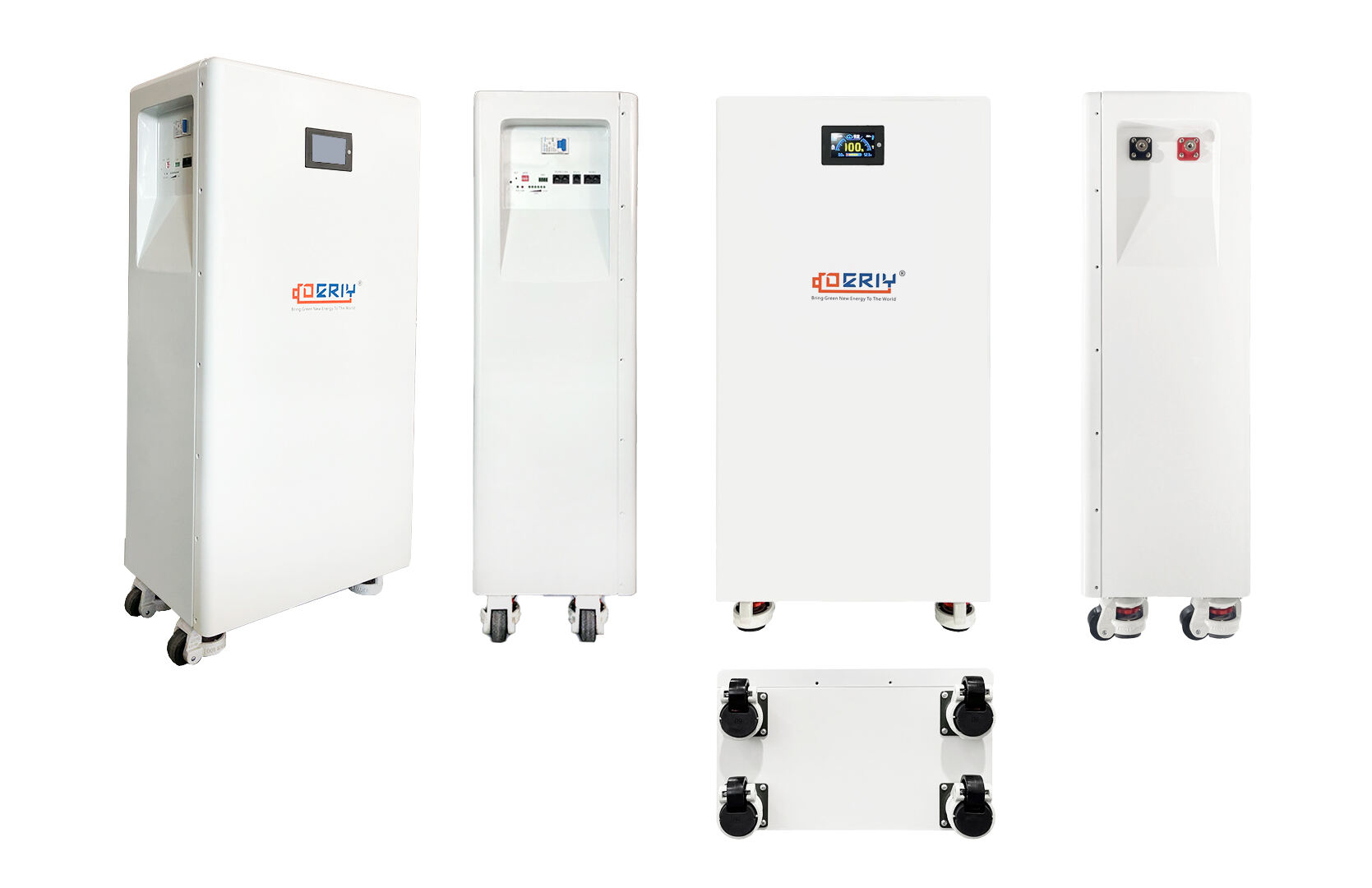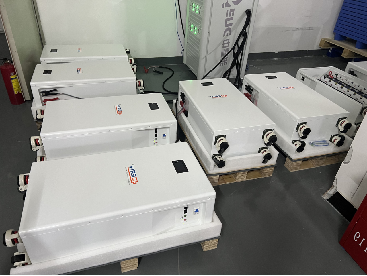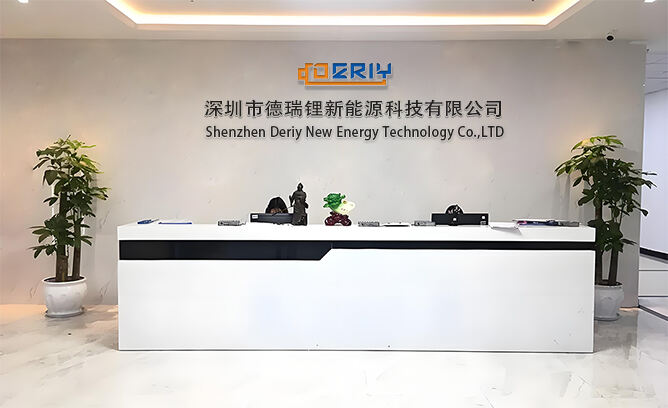
SAVE MORE MONEY BY BUILDING YOUR LiFePO4 BATTERY YOURSELF!
The LiFePO4 battery DIY guide is the ideal starting point for beginner considering DIY and bulid high-quality LiFePO4 batteries project.

The LiFePO4 Battery is the ideal starting point for anyone considering a DIY and building quality Li-Ion battery project. Learn the basics of LiFePO4 batteries and get tips for incorporating this abundant clean energy source into your home. Before your DIY battery project, you should know the following:

Lithium iron phosphate (LiFePO4 or LFP) is the safest of the mainstream lithium-ion (Li-Ion) rechargeable battery types. Compared to more traditional cobalt-based lithium-ion batteries, they have the advantage of increased power output, faster charging, lighter weight, and longer life. The battery also has better safety features and will not explode under extreme conditions. LiFePO4 batteries use LiFePO4 as the positive electrode and graphite as the negative electrode. The nominal voltage of the battery is 3.2V, it is worth mentioning that the nominal voltage of the lead-acid battery is 2.1V, and in many cases, the LiFePO4 battery is a perfect replacement for the lead-acid battery.

There are currently three common shapes of LiFePO4 batteries: cylindrical, prismatic, and pouch. Different shapes of batteries will have a certain impact on performance. At present, the most suitable battery DIY enthusiasts are the prismatic LiFePO4 batteries, which are very suitable for both performance and operational difficulty.

The benefits of LiFePO4 batteries are many:
1. With a service life of up to 15 years and more than 8000 cycles.
2. Lighter weight and smaller size.
3. The overall cost over the service life is low.
4. Support high-speed charging and discharging.
5. Allow 80% DOD or more discharge.
6. Low self-discharge rate.
7. Very environmentally friendly and safe, and requires little maintenance.
8. High-temperature performance is guaranteed.
…
I. Anode material -- lithium iron phosphate (LiFePO₄)
Determining Battery Energy Density, High Temperature Resistance and Cycle Life Considerations
II. Negative electrode material -- graphite (C)
Provides lithium ion embedded channels that determine battery charge/discharge rate and low temperature performance.
III. Electrolyte - LiPF₆ solution
Conducts lithium ions, affecting battery internal resistance, multiplier performance and shelf life
IV. Diaphragms - polyolefin microporous membranes
Isolates positive and negative electrodes, allows lithium ions to pass through, thermal shutdown function.
V. Battery Management System (BMS)
Voltage / Current / Temperature Monitoring: Accuracy ±0.5% (voltage), ±1% (current).
Equalization control: single unit voltage difference <5mV.
Fault protection: overcharge (>3.65V cut-off), overdischarge (<2.0V alarm).
VI. Shell and encapsulation process
Square Aluminum Housing, Cylindrical Steel Housing, Soft Cover Aluminum Plastic Film.
There are two basic types of connections:
I.One type of connection is series (S).
Connecting the positive and negative terminals of two different batteries is called series connection. As a result, the voltage of the battery pack increases while the capacity remains the same.
II.The other is parallel (P).
The positive and positive terminals of two different batteries are connected in parallel. The result is that the capacity of the battery pack increases while the voltage remains constant.
Of course, pure series and parallel connection is only applicable to small LiFePO4 battery packs, large LiFePO4 battery devices usually have both series and parallel connection. It should be noted that mixing batteries is not recommended. Mixing batteries can only be considered if the chemistry and voltage are the same. There are some extremes that only a veteran electrician can master and should not be imitated by a beginner.
Balancing and compression of lithium iron phosphate batteries is a very important part of the process.
The purpose of battery balancing is to balance the charge between each cell to ensure consistent performance across the entire battery pack, allowing the pack to maintain performance and operate more safely for longer periods of time. Typically, battery balancing can be done manually or by a balancer.
I. Preliminary preparations
Battery core: choose big factory lithium iron phosphate battery core, need to be divided into capacitance and resistance (voltage difference <0.05V, internal resistance difference <5mΩ).
Protection boards: matching voltage/current (e.g. 12V select 4 series, current > device peak), with equalization required.
Tools: spot welder, multimeter, internal resistance meter, insulating materials.
II. Assembly steps
1. Cell Arrangement
Series: 4 strings = 12V, 16 strings = 48V (single 3.2V).
Parallel: increase capacity (e.g. 2 in parallel 6000mAh = 12Ah).
2. Welding and Joining
Nickel sheet spot welded to connect the core, copper sheet for high current.
The protection board is connected to the voltage collection line first and then to the main positive and negative terminals.
3. Package test
Heat-shrinkable tubing/battery box package for testing total voltage, charge/discharge function, and protection board response (short-circuit disconnect <1 second).
III. Key considerations
1. Safety first: anti-short-circuit, anti-overheating (spot welding current ≤ 150A), away from ignition sources.
2. Points to avoid the pit: electric core: refuse to dismantle the machine / no standard electric core, large monomer need to be connected to the copper row.
3. Protection board: real current measurement, to avoid false labeling (such as nominal 200A need to load verification).
Battery compression is the use of certain tools to tightly fit each battery cell together. This is done to prevent the battery from expanding during operation, which can affect the performance of the battery pack. Again, compressing a battery is not difficult. It is generally recommended to use sponges or insulating sheets to fill the gaps between the different cells, and to add insulating frames or insulating containers to the outermost layer of the entire battery pack.
LiFePO4 battery charging requires the use of a dedicated charger for charging.
Be careful not to use a lead-acid battery charger for charging, as this will cause the LiFePO4 battery to not be fully charged.
Also, it is important to note that LiFePO4 batteries are not allowed to charge at temperatures of 0°C (32°F) and below, which can damage the battery.
I.Excessive charging time
Causes: Too little current (e.g. charging a large battery with a cell phone charger), aging battery.
Solution: Use a matching charger, aging batteries need to be replaced.
II. Undercharged (voltage not up)
Causes: unbalanced battery packs, damaged monoblocs, insufficient charger voltage.
SOLUTION: Repair with a balanced charger, troubleshoot bad cells and ensure charger output.
III. Heavy charging and heating
Causes: Excessive current, high ambient temperature, increased internal resistance (aging).
SOLUTION: Reduce charging current and maintain ventilation.
IV. Overcharge/overdischarge
Hazards: Overcharging leads to bulging and short-circuiting; over-discharging permanently damages.
Prevention: A charger with a protection board (BMS) must be used.
V. Low-temperature charging issues
Phenomenon: charging below 0℃ is easy to precipitate lithium, shortening the life.
Solution: Heat the battery to above 5℃ before charging, or use a low temperature charger.
VI. Wrong choice of charger
ERROR: Using a lead-acid charger (voltage/current mismatch).
Correct: Select lithium iron phosphate special charger (single 3.65V, support BMS communication).
VII. Battery pack imbalance
Performance: Some cells are full/empty first, overall capacity decreases.
Repair: Charge and discharge regularly with an equalizing charger, or manually replenish the battery.
I. Prioritize formal recycling channels
Official channels are prioritized: contact the official recycling services of battery manufacturers or car companies, and reject informal channels.
Avoid street vendors and itinerant recycling points, which are often price-pressurized, illegally dismantled, and have no environmental safeguards.
II. Detecting battery status to avoid underestimation of value
Verification of basic information: Provide the battery model, capacity and date of production (label or proof of purchase) to prevent recyclers from using "incomplete information" to suppress the price.
Genuine battery labels should contain the manufacturer, nominal capacity (e.g. "LPF-100Ah").
Specialized equipment testing: requires testing with a battery tester:
Remaining capacity: ≥80% can be recycled (e.g. 100Ah battery remaining ≥80Ah);
Internal resistance: single ≤ 50mΩ, high internal resistance may be excessive aging;
Voltage platform: full voltage ≈ 3.65V, too low need to be alert to damage.
Observe whether there are signs of bulging, liquid leakage, short circuit, such batteries are of low value and dangerous;
If the recycler refuses to dismantle the machine for inspection, there may be cell counterfeiting (e.g. lithium ternary pretending to be lithium iron phosphate).
III.Standardize the transaction process to avoid disputes
Price transparency: reject "pricing by weight" (low density of lithium iron phosphate, easy to lose by weight), pricing by reference to capacity (e.g. 100Ah battery ladder recycling price of 200-600 yuan).
Be wary of "high-priced bait": recyclers may falsely report losses when testing (e.g., falsely claiming only 50% capacity).
IV. Attention to safety and environmental risks
Transportation and Storage Safety: Avoid short-circuiting and crushing of the battery, disconnect the circuit before transportation and use insulated packaging;
Store away from ignition sources and high temperature environments to prevent spontaneous combustion.
Summary: Recycling Pit Avoidance Mantra
"Choose the regular, measure the capacity, check the qualifications, sign the contract, keep the vouchers, and keep it safe."
If in doubt about the recycling process, consult the China Material Recycling Association or your local new energy industry association to ensure that the batteries are recycled legally, safely and at a high value.
There are many benefits to recycling lithium iron phosphate batteries:
1. Resource recycling
2. environmental pollution reduction
3. Economic value: cost reduction and efficiency ladder utilization
4.Reduction of electronic waste
...
I. Selecting formal purchase channels
Give priority to official channels, through the official website of the battery brand, authorized dealers, and avoid purchasing from second-hand platforms, unauthorized stores or "low-priced promotional" channels.
II. Check the product identification and packaging
Check battery labels, anti-counterfeiting markings (e.g. QR code, scratch-coating verification code), which can be verified through the brand's official website.
Battery shell is flat, no burrs, no traces of leakage; electrodes (positive and negative) no rust, oxidation, neat interface.
III. Testing battery performance
Measurement voltage: Li-FePO4 battery full voltage is about 3.6-3.7V, the discharge platform is stabilized at about 3.2V (it is more accurate to measure it after 1 hour of resting after full).
Common lithium iron phosphate battery pack voltage:
The 12V battery pack consists of four 3.2V cells connected in series;
The 24V battery pack consists of 8 sections connected in series.
If the 12V battery has 6 small cells (2V each) inside, it may be a lead-acid battery impostor.
IV. Verification of branding and certification
Check the brand's official website: Check the authenticity on the brand's official website through the anti-counterfeiting code or serial number on the battery.
Some brands offer traceability systems to track production batches.
V. After-sales service guarantee
Provide formal invoice and warranty card to confirm the warranty period (Genuine products usually provide 2-5 years warranty).
Reject products with "no warranty" or "verbal promises".
VI. Special Scenario Notes
Electric car batteries:
Verify that the battery matches the EV model and that the original battery has a model-specific code.
Dismantle the machine to check whether the internal battery cell is "LiFePO4" marking, to avoid the use of ternary lithium batteries (high voltage, easy to explode) impersonation.
Energy storage batteries:
Requirements **BMS (Battery Management System)** parameters, genuine BMS with over-charging, over-discharging, short-circuit protection.
Summarize: quick identification mnemonics
"One check the channel two look at the label, three measure the voltage four weigh fat, five compare the price six certified, seven to warranty can not be false."